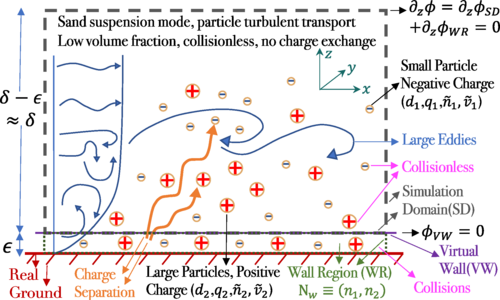Phys.org April 27, 2021
Sandstorms can generate high-magnitude electrical fields capable of disrupting communication equipment. Recent studies have shown that sand can pick up static electricity through collisions that take place near the ground. To resolve the motion of sand particles researchers in Saudi Arabia created a large-eddy simulation, where the tiny fluctuations get smoothed over and only large ones remain. They modeled the turbulent eddies of sandstorms inside a virtual box that stretches from ground level to kilometer-scale heights in the atmosphere. The sandstorm’s strength was controlled with an algorithm that introduced different densities of charged particles into the box, just above the desert floor. The computations revealed that smaller-sized grains tended to follow the turbulent flow, but larger grains did not. Because the two size classes of sand grains had opposite charges, this turbulence-based separation created an electric field that sustained itself and reinforced further charge separation, ultimately producing electric fields close to several hundred thousand volts per meter, which accurately matched field measurements. According to the researchers the simulation framework may be used as a predictive tool for rovers and satellites dealing with dust devils on Mars…read more. Open Access TECHNICAL ARTICLE

The simulation domain (SD)… Credit: Phys. Rev. Research 3, L012008, 20 January 2021